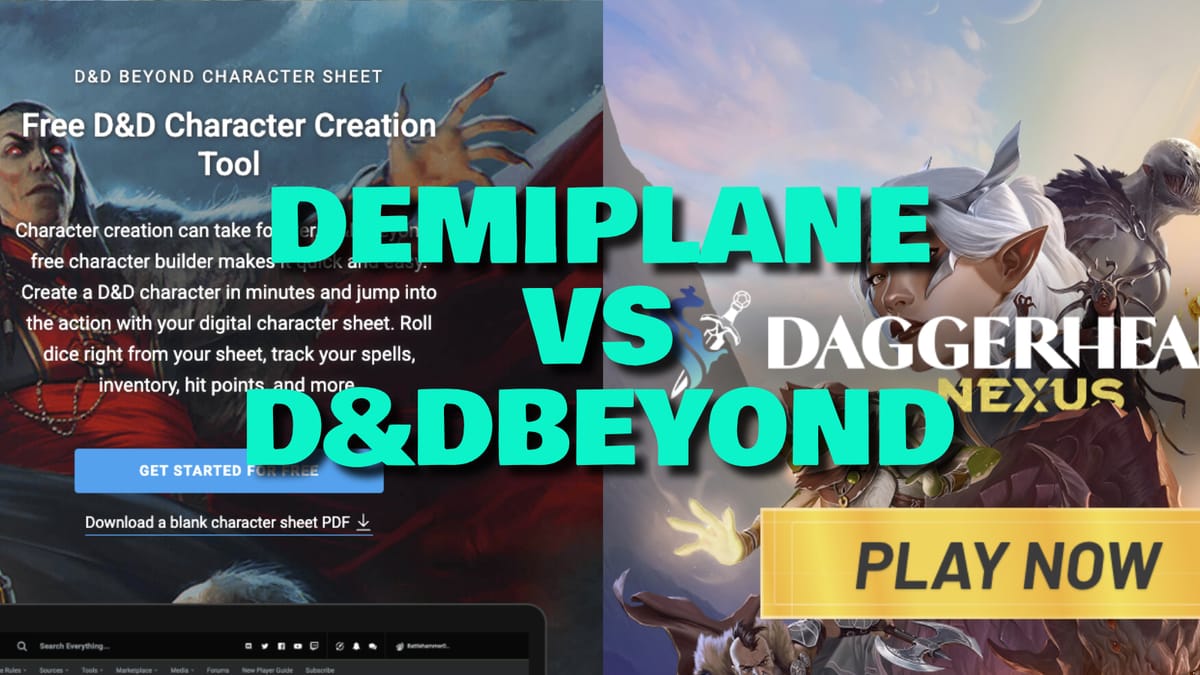
As Chronos slew Uranus and Zeus in turn killed Chronos, Daggerheart is working to unseat D&D from its throne atop the bones of innumerable RPGs. After Tabletop Editor-in-Chief Mike Dunn and I covered the core book’s release recently, the time comes to examine realms beyond the physical: the mystic shrouded land of VTTs. Following Sigil’s fall from the spire, D&D Beyond remains the official toolset for its namesake game. Daggerheart’s implementation comes from Demiplane, bringing with it new features, integrations with Roll20 and DrivethruRPG, and the promise of continued development. I’ve written before about my appreciation for the general UX and ease of play on Demiplane. Now comes a deeper dive into Daggerheart itself, and how these toolsets compare to Hasbro’s monolith.
Playtest Lessons and Design Feedback
A while back we talked with Demiplane staff about the data they gain through player engagement, and the possibility of feeding that into design. Playtesting usually seeks input from players themselves, which invites useful but not necessarily representative information. Those players have limited context and sophistication for the full complexities of game design, and don’t always have a handle on the gritty mathematics that drive good mechanics.
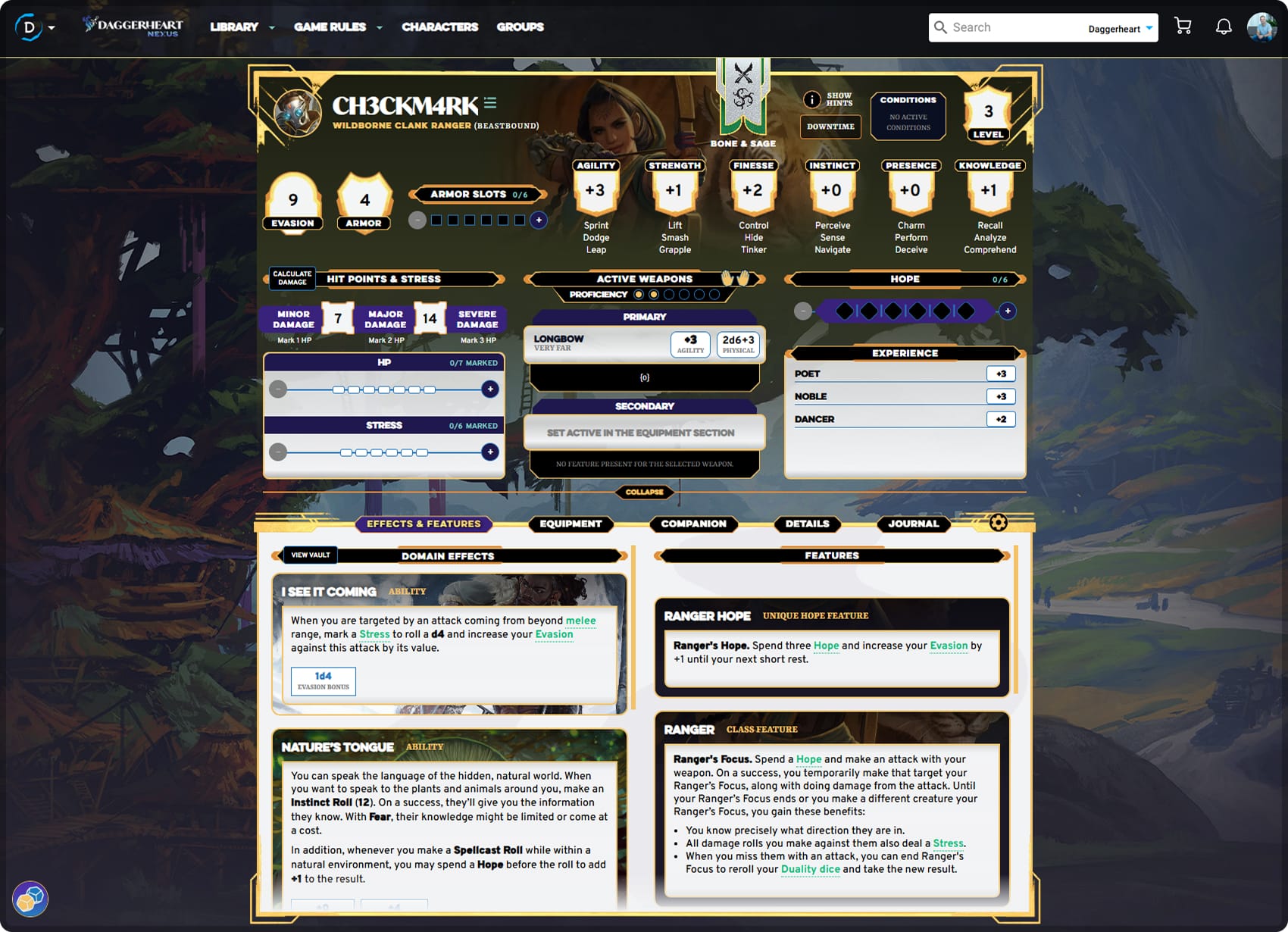
The Demiplane team has a growing body of experience running playtests with titles like Paizo, Daggerheart, and the Cosmere preview, with Starfinder 2e launching later this year. One key insight publishers are curious about is whether design decisions are being made at the table. For example, if a class includes spear proficiency—how often are players actually choosing spears? With Daggerheart’s domain card system, they’re also watching for popular pairings to identify potentially broken or overly synergistic options. We’re far from a point where a game is built primarily and deliberately with this data, but greater rates of adoption and work with this information is sure to drive tighter playtesting and design.
As far as we can tell, D&D Beyond does not leverage playtest data via the platform, because the Unearthed Arcana playtest materials are not actually on the platform. This is an odd choice, because dndbeyond.com is where they actually give access to the playtest materials. Of course, the site has only been under WoTC’s control for a couple of years, so that may account for it.
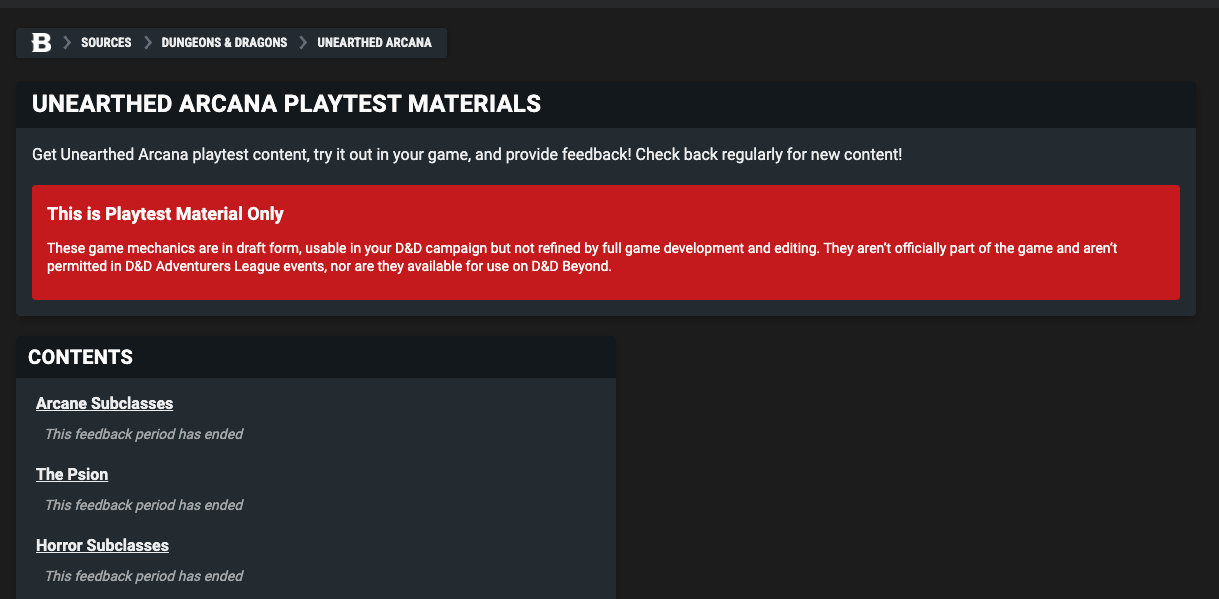
Digital Tooling and Interactivity
Daggerheart’s tools on Demiplane are robust and growing. In our preview we observed an impressive range of options to make the game easier to manage on the GM side. The Digital adversary and environment support are probably the biggest time-savers, and create room for creativity. Adversaries come with statblocks that are easily editable and include links to keywords and rollers for all abilities. Moreover, the toolkit contains a list of all monster abilities, which you can add or subtract to customize your own enemies. The team is a ways out from ground-up homebrew, but item customization is rolling out soon, with broader homebrew support coming later. That said, Demiplane’s contextual approach to homebrew is already a marked improvement over the ‘start-from-scratch’ workflow found on D&D Beyond, which forces you to interpret the conceptual model that it maps content to rather than intuitively from the content itself. We’d like to see that carried through once a full homebrew suite is integrated.
These tools extend to Environments, like a Cult Ritual or Necromancer’s Ossuary. These are already in the core book (mea culpa for not discussing them with more depth in the review proper) and function similarly to Adversaries. They include passive effects and actions that you can trigger with Fear rolls. Mike Mearls’ Iron Heroes was a painfully underrated game which integrated similar rules, and I’m surprised they never made it into D&D proper. In a way you don’t need these written down. This is just a codification of rules that you could, and should, be using everywhere the players go. Things like darkness and difficult terrain, that nonetheless don’t get integrated by many GMs. (Or, for that matter, many official adventures. Think about it, how many D&D modules have encounters with real dynamism or environmental effects? Can you think of as many as five?)

Demiplane builds these into the interface just like Adversaries, with all the rules and keywords built in, with tools to modify them on the fly. This is the kind of ostensibly small detail that’s going to make a huge difference to your game. The large, accessible resource has enough twists to give each area texture. It eases prep, it makes encounters memorable, and it opens the door for greater experimentation. Demiplane handles the hard work managing the bulk of mechanics, but teaches you the texture those rules can add to the experience. Similar options are launching for NPCs this week, letting you store and save them for your game.
As we are comparing Demiplane’s toolset for Daggerheart to D&D Beyond’s toolset for D&D, there is a bit of “apples to oranges” to consider. Beyond’s best feature is how it leverages and aggregates the book content for players and DMs alike as a searchable resource that cuts across the library, comparing that to the single book release of Daggerheart doesn’t really work. Demiplane does, however, look to dethrone Beyond as the high bar for character creation and management, and it digitally translates the Daggerheart character sheet and card system from print to screen immaculately. Even the printable version includes the appropriate sidecar sheets. Not to mention the fact that you won’t need to use a browser plugin such as Beyond20 to import your character into Roll20…
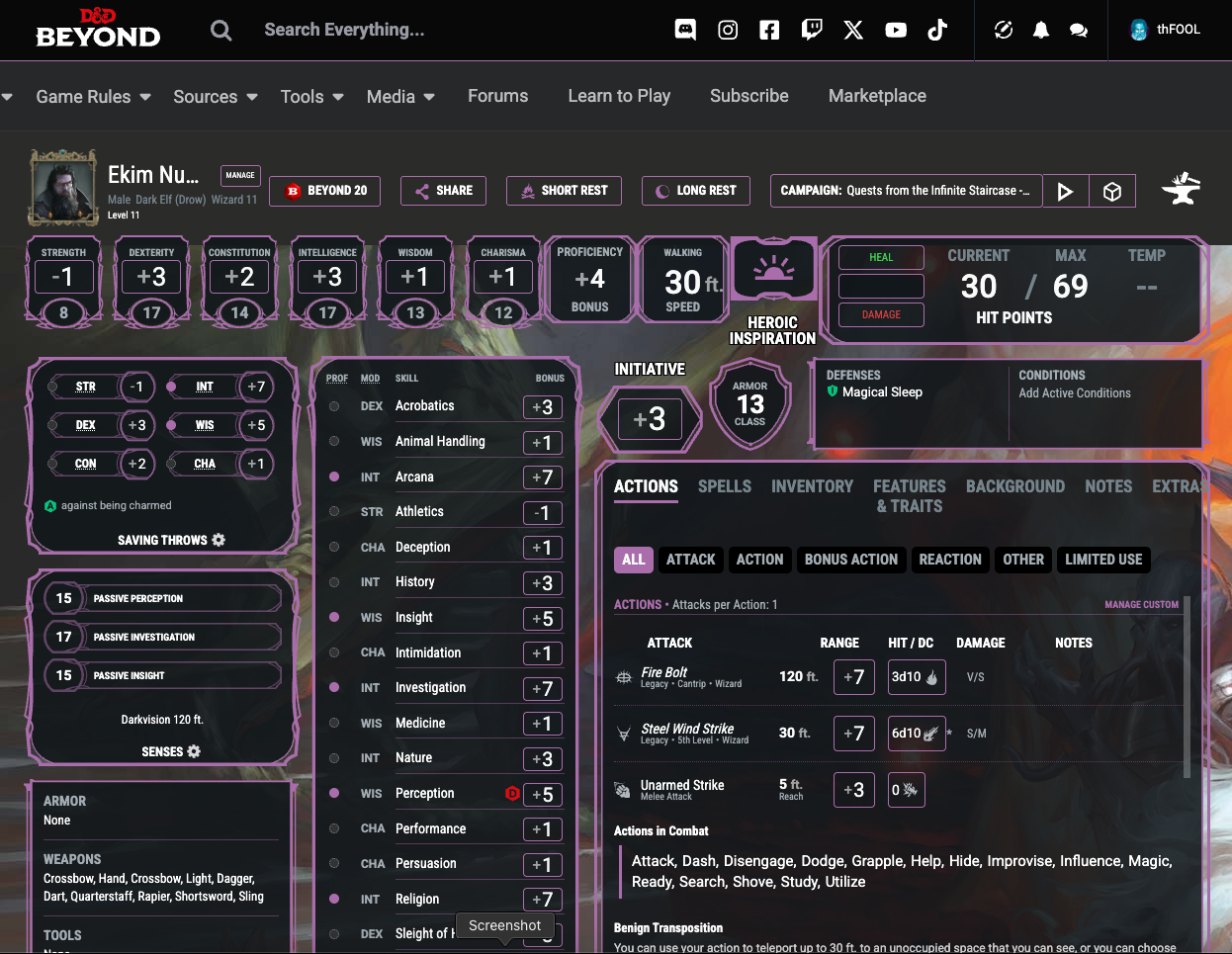
Integration and Community
Roll20 owns Demiplane and DrivethruRPG, and is trying to maximize these shared resources. Though more is on the horizon, you can currently pull characters and adversaries from Demiplane into the VTT on Roll20, preserving changes you make between them.
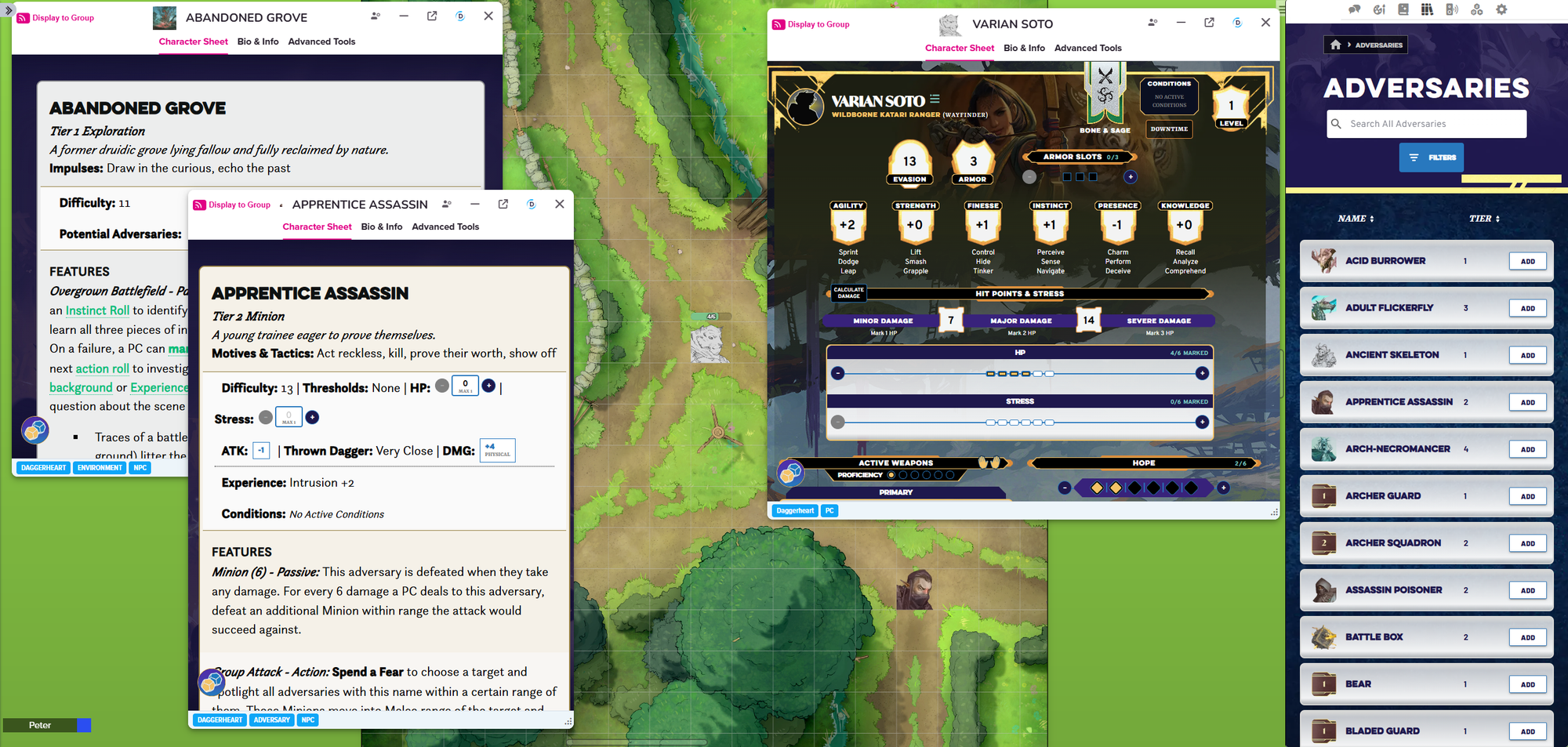
QR codes on character sheets let players access them without needing an account, and significantly reduces barriers to getting new players into the action. Character sheets are exportable to editable PDFs.
Community content is being hosted on DriveThruRPG, where creators are already sharing supplemental materials like custom cards. Darrington Press has an open creative license, and while digital implementation details are still being worked out, it's also possible to sell Roll20 conversions through DriveThru.
The character builder integrates Daggerheart’s Campaign frames, which dynamically introduce character options as players build. Future updates aim to expand what’s possible both inside and outside the official content, making it easier to build and share custom material across supported games.

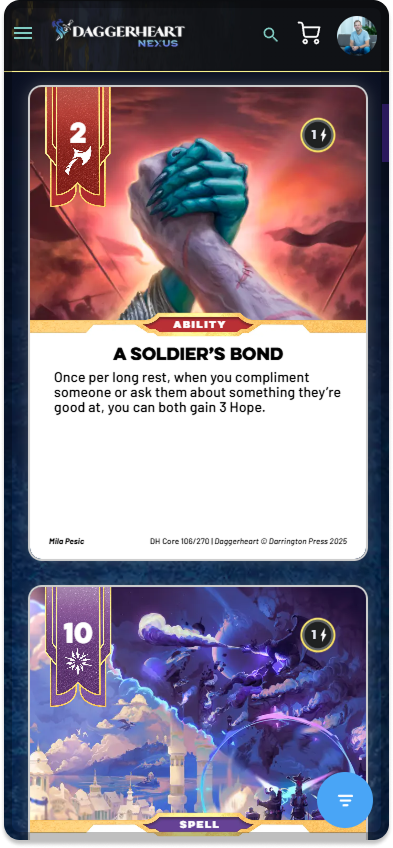
Daggerheart rules content and cards as they appear on ipad and mobile
Conclusion
From where we at Gamingtrend are situated, we can’t tell whether D&D’s dominance is really threatened, but we can tell that Daggerheart’s success is something new to the market. The physical editions sold out faster than anticipated, and the digital edition has been at the top seller on Drivethru’s marketplace for a while now. Roll20 does own both Drivethru and Demiplane; though general cynicism and journalistic integrity compel me to worry about the veracity of that top spot, I think it’s more likely that Daggerheart is just popular. It has Critical Role behind its design and marketing, Demiplane is giving it a robust, easily usable toolset, and if it matters at all, the game is actually pretty great. Rather than cutting a sliver out of the old behemoth’s market share, Darrington Press might be able to grow the community and seek new players.
